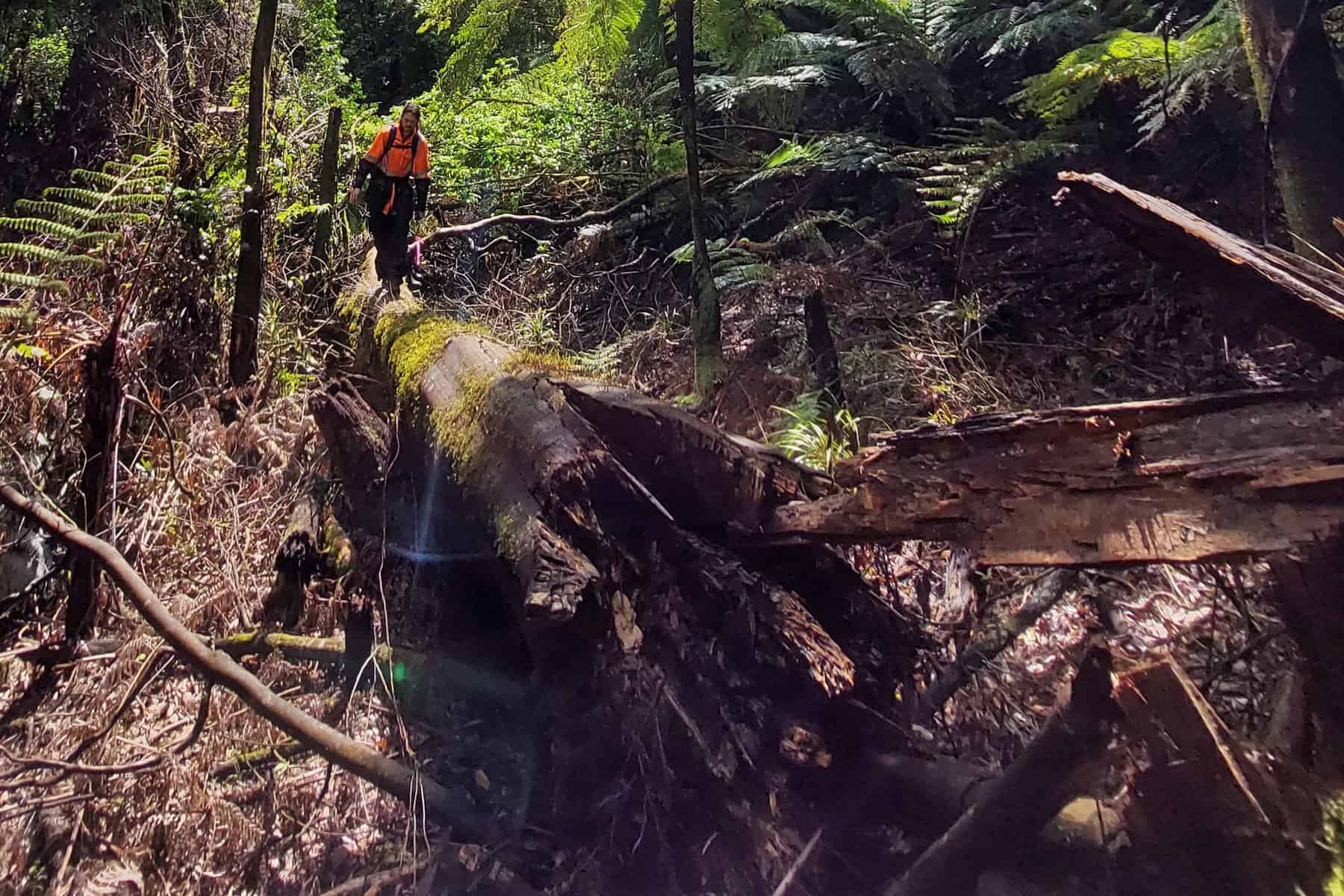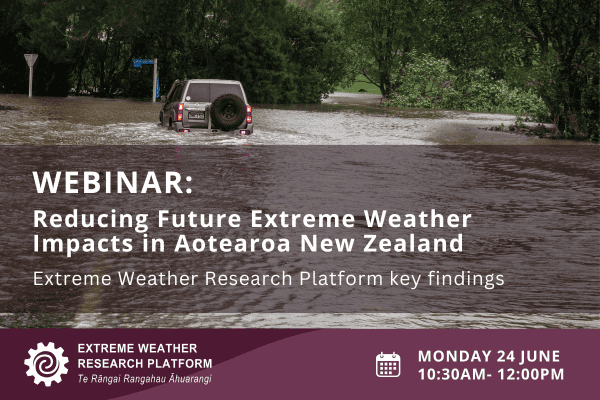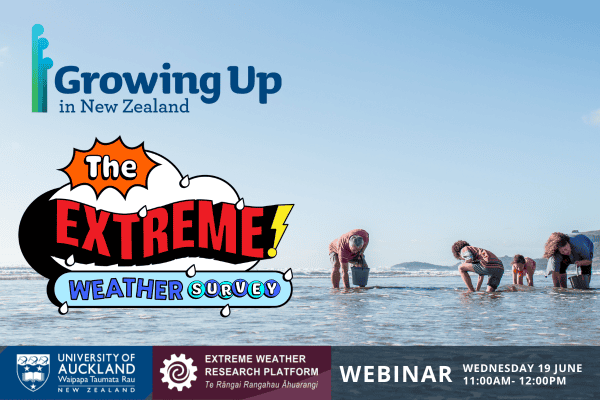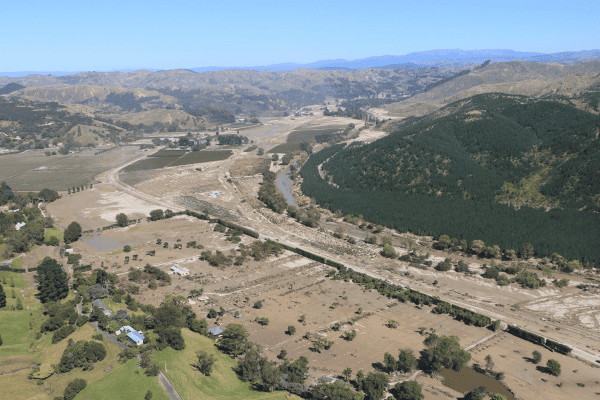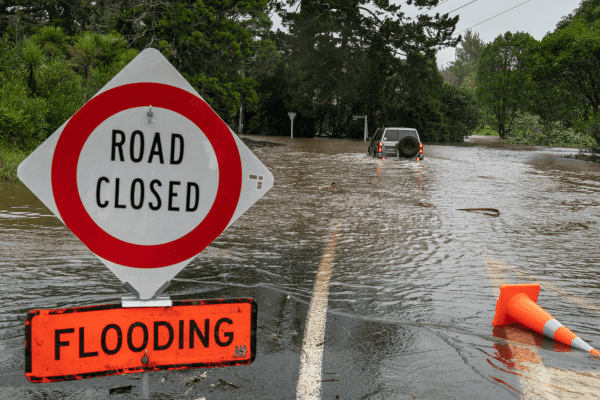By Rowan Sprague, Manaaki Whenua Landcare Research
Project summary
In mid-February 2023, Cyclone Gabrielle struck the North Island of Aotearoa-New Zealand, causing widespread devastation. As part of the cyclone response, the Ministry of Business, Innovation and Employment (MBIE) contracted Manaaki Whenua – Landcare Research to deliver a high-level integrated assessment of the immediate impacts of Cyclone Gabrielle on indigenous ecosystems and species in affected areas. At the end of this project, we will have recommendations for management interventions that will protect key ecosystems, species and conservation infrastructure, and strategies to increase resilience to future events.
Project objectives and progress
Identify changes in extent and condition of vegetation cover immediately after the cyclone, including native, non-native, and mixed vegetation types. On the ground studies will evaluate impacts on indigenous forest ecosystems, including lowland fragments of high conservation value.
Data has been collected showing the extent of cyclone damage (e.g., new bare ground, flooding, sediment deposition). Analysis of this data and comparison to maps of vegetation cover (e.g., land use, forest type, QEII covenants, protected areas, wetlands) is ongoing.
Preliminary results indicate that impacts to native ecosystems were low overall, but with isolated patches of far greater damage. Initial exploration of these results is revealing potential errors in both the damage and vegetation cover maps, especially in small patches of vegetation. Work is currently underway to decide how best to account for this.
Ground-based surveys of cyclone damage to Aongatete Forest (Bay of Plenty) and lowland forest fragments (Hawke’s Bay) also support a relatively low level of damage to indigenous forest from Cyclone Gabrielle.
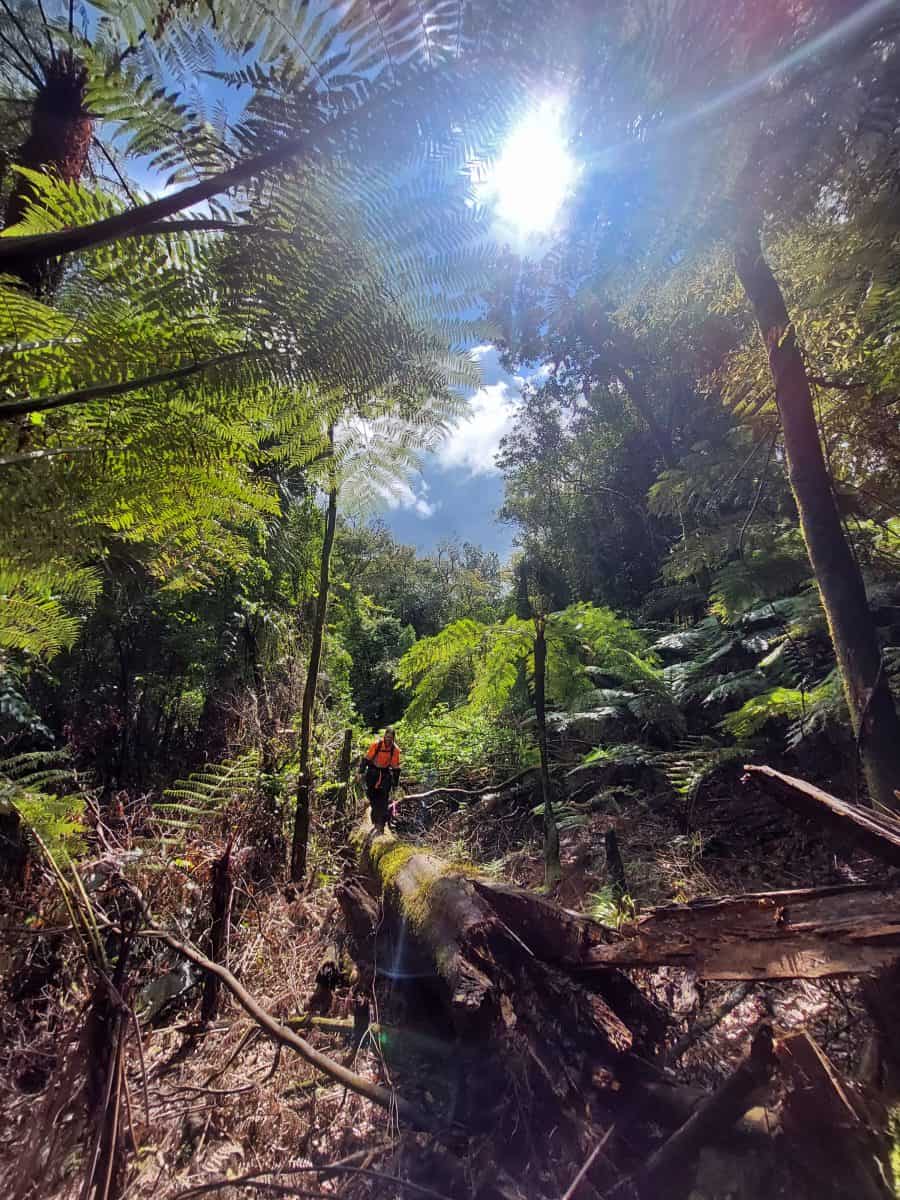
Evaluate impacts on wetland, naturally uncommon, and threatened ecosystems, including those spanning both terrestrial and freshwater domains that support species requiring riparian vegetation for reproduction (e.g., īnanga/whitebait).
To assess changes in wetland condition and biodiversity, we have collaborated with Hawke’s Bay Regional Council to conduct post-cyclone surveys at 22 wetlands. We will work with Hawke’s Bay Regional Council in early 2024 to compare wetland conditions to pre-cyclone surveys.
Cyclone impacts on uncommon ecosystems are being assessed through studies of cyclone impacts on the density and distribution of braided river birds (with Hawke’s Bay Regional Council, surveys completed) and sand dune vegetation (with Northland Regional Council, surveys ongoing). Analyses of these datasets will be completed in early 2024.
We are collaborating with project partners on case studies of cyclone impacts across a range of threatened species (such as whio, tūturuatu / shore plover, kākābeak, pekapeka / long-tailed bat, and Hochstetter’s frog). Analyses on how threatened species were affected by the cyclone will be completed by mid 2024.
Finally, representatives of 64 ecosanctuaries have been interviewed to provide insight into how the cyclone affected conservation infrastructure, with results presented at the Sanctuaries of New Zealand annual workshop in August 2023.
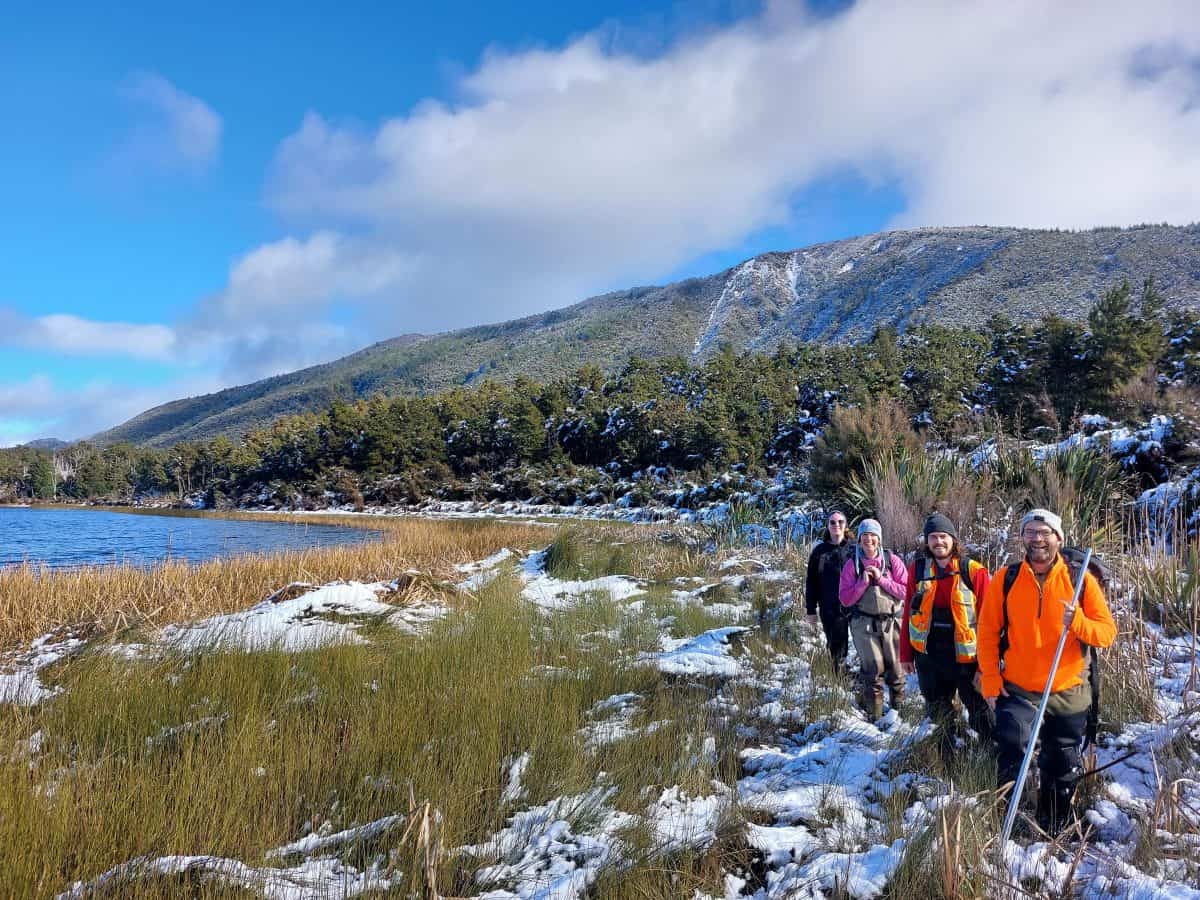
Quantify resilience of resident fish and macroinvertebrate communities and recolonisation of migratory fish species, especially threatened taonga (tuna and īnanga), which are indicators of river health for iwi and represent a range of life-histories requiring access to the ocean, estuaries, and freshwater to complete their lifecycles.
We are continuing eDNA and physical sampling surveys at 56 sites ranging from low to high cyclone impact, conducted alongside Hawke’s Bay Regional Council. Early results from physical sampling for invertebrates indicate an initial decrease in relative abundance of species that are sensitive to environmental stressors (such as mayflies, stoneflies, and caddisflies). Community composition of invertebrates in low impact sites differed from moderate and high impact sites, with low impact sites having more mayflies and caddisflies, whereas high impact sites had more Diptera (true flies), worms, and snails.
